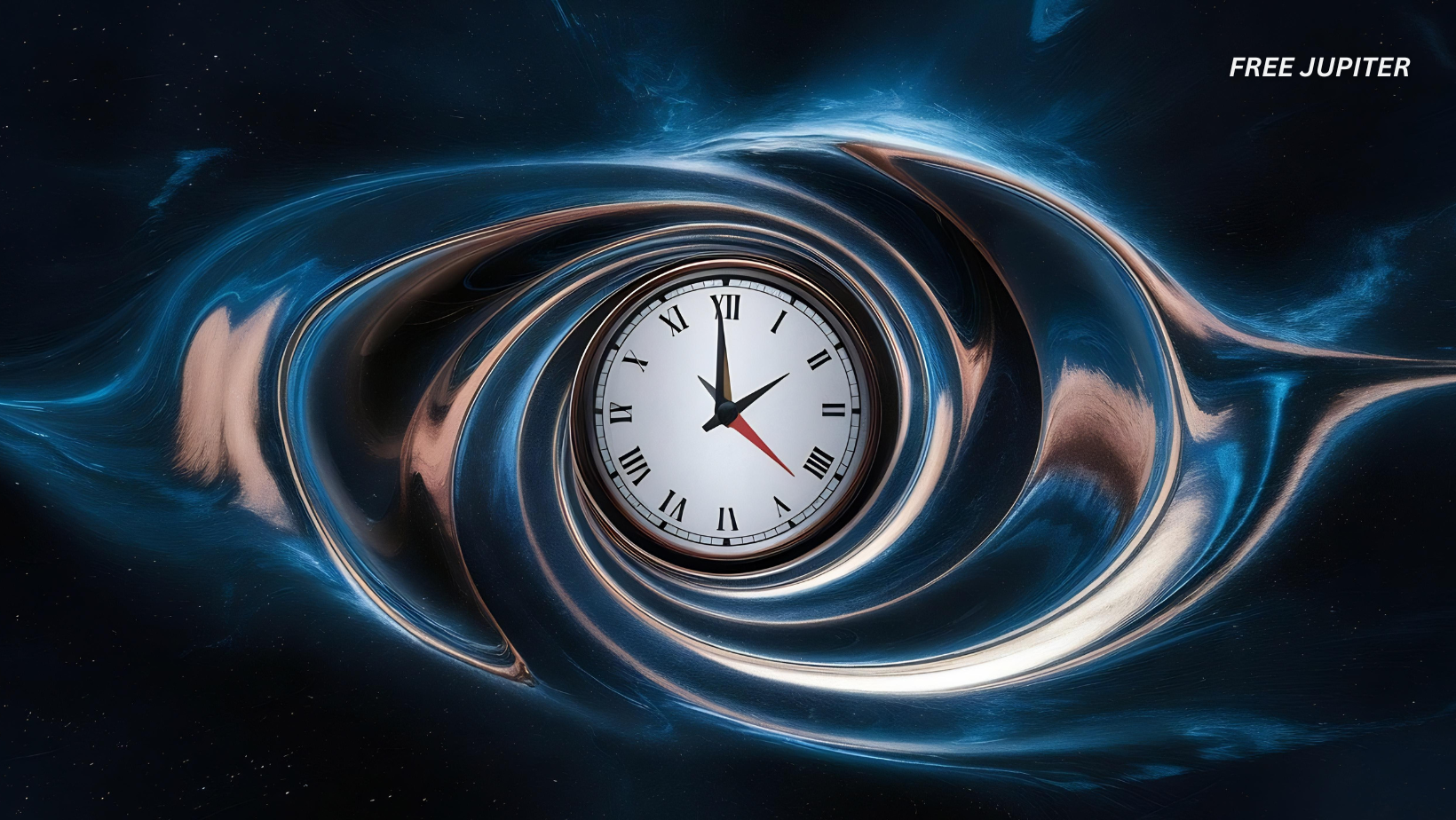Friendly Note: FreeJupiter.com shares general info for curious minds 🌟 Please fact-check all claims—and always check health matters with a professional 💙
We’re used to thinking of time as something simple and steady. One moment follows the next, ticking forward like clockwork. Yesterday leads into today, and today into tomorrow. No surprises there. But what if this whole idea of time—as a single, straight line—isn’t quite right?
One physicist has come forward with a theory that completely reimagines how we understand time. His name is Dr. Gunther Kletetschka, a researcher at the University of Alaska Fairbanks, and his idea is pretty wild: time doesn’t just have one direction—it has three, just like space.
If that sounds strange, it’s because it is. But let’s unpack it step by step.
Flipping the Script: What If Time, Not Space, Is the Foundation of Reality?
In everyday life—and in most physics textbooks—space takes center stage. We think in terms of distance, location, size, and movement. Space has three dimensions: length, width, and height. Time is usually tacked on as a fourth, often treated like a background setting where everything else happens.
But Kletetschka’s theory flips this idea on its head. He argues that time, not space, is the true framework of the universe. In his view, space is something that emerges out of time, not the other way around.
In other words: Time is the stage. Space is the scenery.
Read more: Tiny Black Holes Might Be Lurking in Your Home
Three Dimensions of Time? Let’s Break That Down
To imagine what three-dimensional time might look like, think of how we experience space. You can walk forward and backward (one axis), side to side (another axis), and up or down (a third axis). That’s three-dimensional space.
Now imagine that time also has three directions, or “axes.” Instead of just marching forward in a single line, time could have multiple pathways—kind of like being able to turn left or right in time, rather than just moving forward. You could potentially explore alternate versions of events or choose between different possible futures.
This isn’t science fiction—it’s a serious theoretical concept, though it does sound like something out of Doctor Strange or Interstellar.
Kletetschka describes this three-dimensional time as a “canvas” on which all of reality is painted. Space, then, is the colorful paint on top of that canvas—meaning that everything we see, touch, or move through is really just a product of deeper time-based geometry.
Six Dimensions in Total: A Step Toward a “Theory of Everything”?
So, if time has three dimensions and space also has three, that gives us a six-dimensional model of the universe.
Why does that matter?
Well, physicists have long been searching for a “Theory of Everything”—a single framework that explains all the forces of nature. Right now, we have two major theories that work beautifully on their own but don’t fit together:
- Einstein’s General Relativity, which explains gravity and the large-scale structure of the universe.
- Quantum Mechanics, which explains atoms, subatomic particles, and how they behave at extremely small scales.
The problem? These two theories refuse to get along. They offer different views of reality that can’t currently be reconciled. But many scientists believe that adding extra dimensions—like those in Kletetschka’s model—could provide the missing link that unifies them.
In fact, many cutting-edge theories in physics, such as string theory, already rely on the idea of extra dimensions. But most of those are spatial. Kletetschka’s twist is to make time multidimensional instead.
Read more: Experts Say Human DNA Can Be Hacked—and May Be the Next Cybersecurity Threat
What Makes This Idea Different From Other 3D Time Theories?
Kletetschka isn’t the first person to wonder if time could have more than one dimension. But earlier attempts at modeling three-dimensional time have mostly stayed in the realm of abstract math and theoretical speculation. They didn’t produce results that could be tested or compared to real-world data.
That’s where Kletetschka believes his theory stands apart. According to him, his model makes concrete predictions—specifically, it can be used to calculate the actual masses of known particles, such as electrons and quarks. That’s a big deal in physics, because if your theory correctly predicts measurable values, that’s a major sign you might be on the right track.
Even better, his version of the theory preserves cause and effect. In other words, even in this three-dimensional time, things don’t get confusing or contradictory. Actions still lead to results. There are no bizarre time loops or paradoxes like you’d see in a sci-fi movie.
The Skepticism: Why the Physics Community Isn’t Convinced Yet
As exciting as this all sounds, we need to pump the brakes just a little.
Kletetschka’s theory hasn’t been widely accepted—at least, not yet. It was published in a relatively obscure scientific journal, not one of the big names like Nature or Physical Review Letters. And so far, no independent researchers have confirmed his findings or replicated his results.
In the world of science, peer review and replication are everything. A theory might be elegant, mind-bending, and mathematically beautiful, but unless it passes through the fire of independent testing and confirmation, it remains speculative.
So, as of now, the idea of three-dimensional time is more of a fascinating hypothesis than a proven breakthrough.
Why This Matters—Even If It’s Not Proven Yet
Even if this theory doesn’t turn out to be correct, it still plays an important role in science. Why? Because challenging assumptions and exploring bold, outside-the-box ideas is how science grows.
For centuries, humanity believed that Earth was the center of the universe. Then came Copernicus. People thought time and space were fixed and absolute—until Einstein showed otherwise. Who’s to say what the next major shift might look like?
The idea of three-dimensional time might sound radical today. But if it leads to new ways of thinking, new experiments, or even just better questions, it will have served its purpose.
Read more: Going to Bed Early? This Study of 20,000 People Reveals What Really Happens
Final Thoughts: A Multiverse of Possibilities?
If Kletetschka’s idea proves even partly true, it could revolutionize how we understand everything—from the origin of the universe to the nature of consciousness. After all, if time has multiple directions, could that open the door to alternate timelines or parallel realities?
And what about our own lives? Would free will mean something entirely different in a world where time is a vast, branching network instead of a narrow, one-way street?
For now, we don’t have the answers. But one thing is clear: time might be far stranger—and more fascinating—than we ever imagined.










